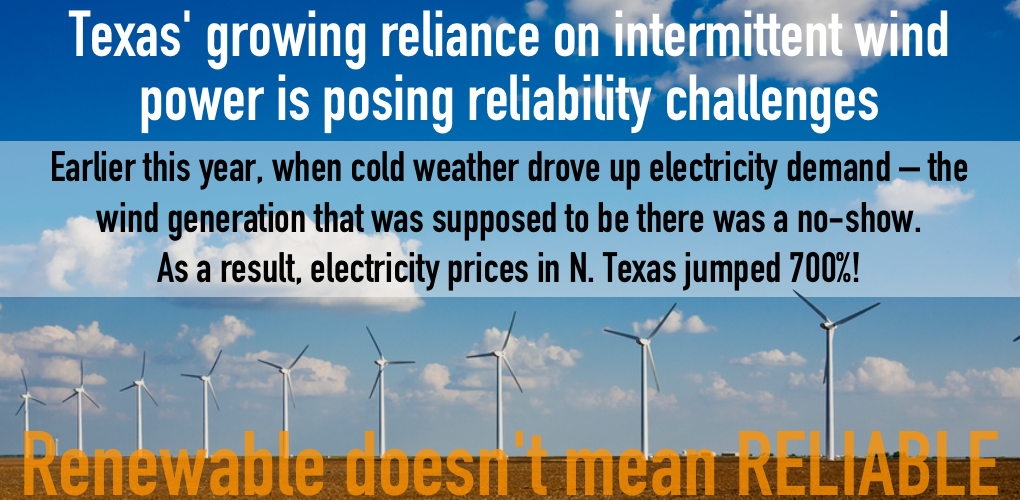
Subsidizing Grid Unreliability
As the share of coal power on the Texas grid continues to decline and as greater reliance is placed on renewable sources of generation, Texans are crossing their fingers that they don’t face rolling outages this summer. There’s ample reason for concern.
ERCOT, the state’s grid operator, is working with a razor-thin reserve margin of generating capacity to manage peak demand from scorching summer heat. The reserve margin is expected to be just 7.4 percent, little more than half the Public Utility Commission of Texas’ (PUCT) target of 13.75 percent. As Utility Dive reports, Texas policymakers not only want to see a larger reserve margin, they also want to know what’s driving the problem.
DeAnn Walker, the chairwoman of the PUCT, has called the situation “very scary.” While Texas needs more generating capacity – particularly on-demand power – it’s instead getting less. The market is not supporting essential baseload capacity. In 2018, three major coal plants closed, totaling nearly 4,300 MW of generating capacity – about 20 percent of the state’s coal fleet. And another coal plant was mothballed earlier this year.
State lawmakers are so concerned with the threat to reliability they have introduced bills calling for a study of what’s happened and what can be done. They are, for very good reason, zeroing in on the impact of renewable subsidies on the market.
Texas’ growing reliance on wind power is already causing problems. Wind meets nearly 19 percent of Texas’ electricity demand and having that much intermittent power on the grid – especially when it’s largely replacing on-demand baseload capacity – is posing reliability challenges.
Earlier this year, when electricity demand in the state peaked because of a cold snap, wind generation that was supposed to be available was a no-show. Unexpectedly calm winds delivered far less generation than grid operators had planned for; in fact, wind delivered just 16 percent of its average output. As a result, spot electricity prices in northern Texas jumped 700 percent.
Groups are now lining up in support of studying the role incentives for renewables are playing in jeopardizing the reliability of the state’s grid. The Texas Association of Manufacturers told the state Senate Committee on Business and Commerce that the rapid growth of wind generation in the state, driven by subsidies, has led to “increased price volatility” and “market distortions.”
Michelle Greg, the executive director of Texas Competitive Power Advocates, a power generator trade association, told the committee that renewables have “crowded out” more reliable coal generation. And Bill Peacock, the VP of research at the Texas Public Policy Foundation (TPFF), told the committee that the huge subsidies afforded renewables are pushing an oversupply of variable generation onto the grid which is causing ERCOT’s reliability issues and forcing it to increase the price of electricity.
To back its claim, TPFF commissioned a study that found that incentives for wind and solar have driven their growth while limiting the growth of “dispatchable generation needed to maintain reliability.” In other words, taxpayers have been forced to subsidize the very problem policymakers and grid operators are now scrambling to fix.
The question is not whether something should be done to shore up reliability but exactly what. It’s a question that needs to be asked and answered in markets all over the country. Market constructs may be different across regions but undervaluing baseload, dispatchable coal generation is proving to be a national problem.
As state legislatures continue to push increasingly ambitious renewable portfolio standards mandating the addition of ever-increasing amounts of wind and solar energy, at huge costs to consumers, one grid after another is shuddering under the weight of so much variable power. Growing reliance on something so inherently unpredictable as the weather is a recipe for disaster. It’s, of course, a disaster of our own making.
- On May 1, 2019
